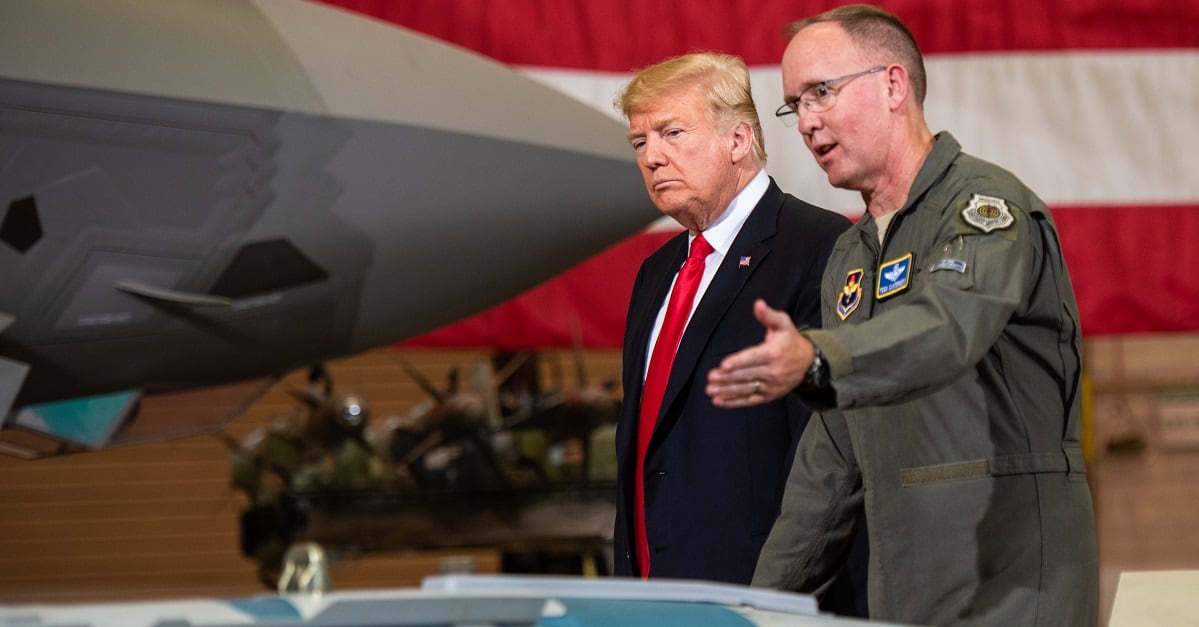The Navy’s top civilian leader thanked lawmakers Thursday for increased defense funding in recent budget, spending he said that’s returning the sea service to a better state of readiness.
But Navy Secretary Richard Spencer also implored against defense cuts currently being bandied about in the White House and Pentagon because “we are just starting.”
“I thought I had a good handle on our readiness issue,” after starting the job in August 2017, Spencer said. “I was completely gobsmacked on how wide and deep the readiness issue was.”
Pentagon planners are building a $700 billion budget for Fiscal 2020, down from $733 billion they assumed they would get only a few months ago. That was before President Trump floated the idea of a 5 percent budget cut across federal departments.
Speaking at an event hosted by the U.S. Naval Institute and the Center for Strategic and International Studies, Spencer said the Navy has received no final word on spending numbers but indicated staffers are “working various scenarios.”
He warned that such funding cuts would stymie the return to readiness the Navy is trying to achieve after nearly 20 years of high operational tempo in the wake of the Sept. 11, 2001 terror attacks.
“Some of the scenarios will make your eyes water with what we might have to do if the numbers are certain numbers,” Spencer said.
He likened the readiness reforms underway to finally getting a bicycle up and pedaling: “Please don’t knock us over, the waste would be absolutely stunning,” Spencer said.
He offered no examples citing specific cuts that imperil readiness efforts and praised recent defense spending bills after years of fitful, uncertain appropriation for ensuring "all the arrows are pointed in the right direction.”
Seventy House members announced Wednesday that they are sending a letter to Trump urging him to keep Pentagon funding at the $733 billion mark.
Spencer touched on a variety of Navy topics during an address that lasted nearly an hour, including strategy, how the Pentagon will compete with Amazon for talent once the retail giant opens its new headquarters in Crystal City, Virginia, and the threats posed by rising powers China and Russia.
He admitted there is a learning curve involved as the military shifts from its post-9/11 fight against asymmetric terrorist groups to preparing for a conventional war.
“We are at an inflection point as we shift from using F-22s with rockets to shoot someone off a bicycle…to the great power competition,” he said.
While today’s operational requirements will always take priority, “strategy is a photo finish for second,” Spencer said.
“Balancing this has been a challenging effort because the calls of readiness have been quite loud,” he said.
He called the conversation about the Navy’s future “emotionally loaded,” and said such conversations haven’t been “terribly productive” in the past 10 to 15 years.
RELATED

“Where does the carrier go in the future?” he said. “If the Navy has a third-rail topic, that might be one of them internally.”
Spencer called China’s ascendance the biggest challenge the Navy has faced since the 1940s, as the United States tries to stand its ground militarily and geopolitically with a potential adversary that happens to be a vital trading partner.
He recalled former Vice President Dick Cheney telling him, “we had the Cold War and an enemy we didn’t trade with.”
“The tyranny of distance lives in the Pacific,” Spencer said.
Adding to the Navy’s arduous to-do list, he called the Russian presence in the North Atlantic “a major threat,” and said the recent Trident Juncture NATO exercise involving 41 allies was “choppy.”
“One can only expect it would be choppy,” he said. “We pushed it hard, we stretched some muscles and we learned a tremendous amount. We need to do more of them.”
He expressed a desire for more of a U.S. naval presence in the thawing Arctic, plus a strategic Arctic port in Alaska and the surface fleet conducting freedom of navigation operations, or FONOPs, in those waters.
Russia has repaved and reopened five bases in the Arctic Circle and has stationed 10,000 Spetsnaz special forces there.
“But it’s resource management and I understand that,” he said. “We need to sell the business plans to our (lawmakers).”
Fixing problems in the Navy’s sealift capability, the ships that would transport troops and gear to a major conventional war, is “again on the wish list,” he said.
“Technically, we can fill the 15-million-square-foot requirement for the lift,” Spencer said. “Technically.”
He expressed interest in buying more used ships from the global market, but said Congress requires a certain number of new purchases before he could explore that possibility.
RELATED

Many of the ready reserve ships are steam-powered, and Spencer also broached the possibility of pulling the steam plants out and installing diesel electric systems.
“Can we do it better, can we do it more efficiently, do we need to recapitalize?” he asked. “Yes, yes and yes.”
Spencer lamented the inefficiencies of Big Navy, pointing to the dismal 41 percent aviation readiness rate he inherited when he came on to the job in 2017.
“If I was a CEO of an airline, I’d be fired instantaneously and probably sued for malfeasance with a readiness number like that,” he said.
Spencer has spoken repeatedly about using private sector practices to drive efficiencies.
Getting those in uniform to realize they can reach out to “non-traditional corporate America” and get actual help and insight has been a challenge, he said.
“We’ve reached a frustration level” at times, he said. “(Marine Corps Commandant Gen. Robert Neller) slammed the table and said, ‘Mr. Secretary, please just tell us what to do!’”
Pushing new thinking among those in uniform has been a challenge, Spencer admitted, likening it to the old “teach a man to fish” chestnut.
“We’ll walk down this experiment together and then after doing the reps we’ll get fishing down perfectly,” he said.
Spencer said the Navy has hired a former Southwest Airlines maintenance official, and “he’s increased throughput by 40 percent in 10 weeks” in the aviation depots.
By Oct. 1, Spencer said he wants to see 341 more Super Hornet strike fighters capable of flying.
“We’re in the nascent stages of it, but the initial feed is working,” Spencer said.
Previously, broken parts went before a review board that decided a part’s fate in 79 days on average, he said.
“We cut that down to two days,” Spencer noted.
The Pentagon has “atrophied,” and lost its spot as the pinnacle of industrial production and improvement it held in the 1960s and 1970s, he said, but the institution is now working on adopting best practices from elsewhere.
“The innovation will come when this will be the standard, not the exception,” he said.
Geoff is the managing editor of Military Times, but he still loves writing stories. He covered Iraq and Afghanistan extensively and was a reporter at the Chicago Tribune. He welcomes any and all kinds of tips at geoffz@militarytimes.com.




